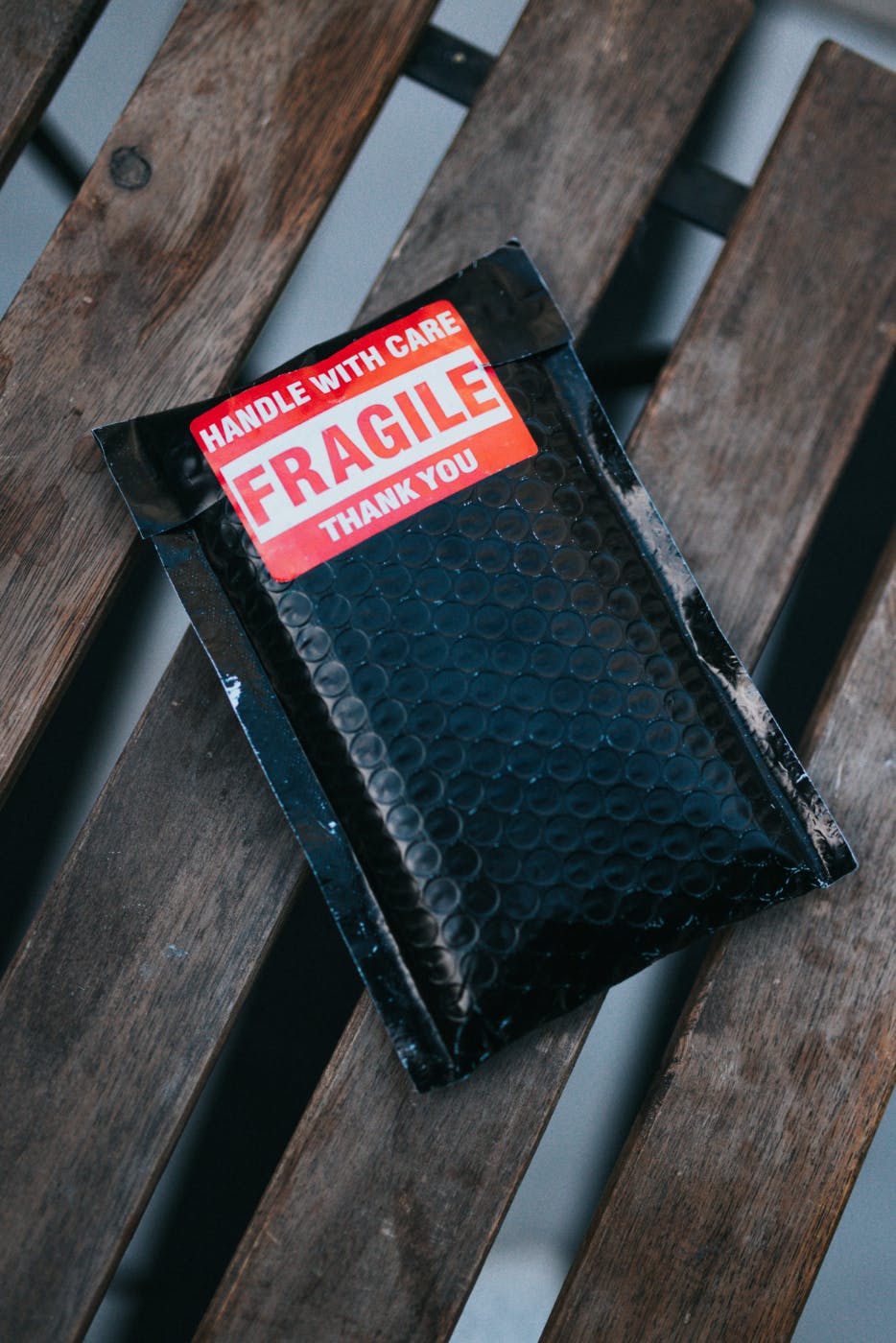
So in this part of the series, we’re looking at the most fragile piece of the loyalty puzzle—and the one brands fake most often. We’ll talk about the illusion of transparency, the small betrayals that shake big belief, and the rare few brands who get it right.
Trust, Transparency, and the Trouble with Faking It
When last we met, I was running from a crazed dumpling salesman who believed I wanted to stuff his daughter and cover her with chili and soy sauce. It was a misunderstanding, of course. Now, I’m hiding out in a quiet location, surrounded by takeout containers and existential dread, and I have a little more time to write on this subject.
Last time, we talked about the difference between buying loyalty and actually earning it—the uncomfortable truth that points and perks aren’t enough to keep people around. Loyalty, real loyalty, is built on something far stickier than coupons. It’s built on trust.
And that’s where a lot of brands start to wobble.
Trust isn’t flashy. You can’t wrap it in a launch campaign or toss it into your product packaging like a thank-you sticker. But without it, nothing else works. Not your marketing, not your retention strategy, and definitely not your “transparency” statement written by legal.
So in this part of the series, we’re looking at the most fragile piece of the loyalty puzzle—and the one brands fake most often. We’ll talk about the illusion of transparency, the small betrayals that shake big belief, and the rare few brands who get it right (yes, including Patagonia again, because they can’t stop doing it right).
Let’s talk trust. Real trust. The kind you can’t manufacture—and the kind your customers can absolutely feel when it’s missing.
Why Trust Is the Real Currency
Trust is what makes a customer stay even when something goes wrong. It’s what makes them say, “Eh, they’ll fix it,” instead of “I’m never buying from these clowns again.” And in a world where every brand is one misstep away from a screenshot, that kind of grace is priceless.
It’s also rare.
Most brands don’t realize how much of their customer relationship depends on trust—until it breaks. When trust is strong, everything else becomes easier: customer complaints become feedback, delivery delays become forgivable, and mistakes become moments for redemption. When trust is weak? Every little bump turns into a landslide. An out-of-stock item suddenly feels like sabotage. A tone-deaf tweet becomes the final straw. A typo in an email somehow becomes proof that your entire company is a sham.
That’s because trust isn’t just about truth. It’s about emotional safety. Do I feel like this brand sees me? Respects me? Will do the right thing when no one’s watching? If the answer’s no—or even a tentative “uhhh... probably?”—then loyalty never really has a chance to take root.
What’s wild is that many brands think trust is a one-time win. Something you earn once and then get to keep. But trust is more like a subscription. You have to keep renewing it. And there’s no auto-pay. Every interaction, every response, every little moment is a chance to prove you still deserve it.
And here’s the part most brands underestimate: trust doesn’t just come from big moments. Sure, your response to a PR crisis matters. But so does how your customer service team replies to a late-night support ticket. Or how clearly your site explains shipping costs. Or whether your “about us” page sounds like it was written by someone who’s met a human before.
Trust is cumulative. And it’s earned in the details.
So yes, flashy branding and clever messaging might win attention. But if you want loyalty? You’ll need to invest in something far harder to measure—and far more powerful when it shows up.
Because trust is the real currency. And once it runs out, no amount of points, perks, or polished emails can buy it back.

The Illusion of Transparency
Transparency has become the go-to buzzword for brands that want to seem trustworthy without doing the actual work of being trustworthy. Slap the word “transparent” into a press release, throw in a few passive phrases like “we hear you” or “we’re on a journey,” and voilà—credibility achieved.
Except… not really.
Transparency, real transparency, isn’t about saying something. It’s about saying the actual thing. The uncomfortable thing. The specific thing. The thing that might make you look a little less perfect but a whole lot more believable.
What most brands practice isn’t transparency. It’s optics. They say they’re “committed to change” but don’t mention what went wrong in the first place. They post vague statements about “values” without ever saying what those values cost them—or when they were last inconvenient to uphold.
It’s the corporate version of “It’s fine, I’m fine, everything’s fine,” written in a friendly sans-serif font.
And customers can tell.
Performative transparency is worse than silence because it pretends to build trust while quietly eroding it. It gives people just enough to feel manipulated. Not informed, not respected—managed. And once a customer feels managed instead of included, the brand relationship becomes less of a partnership and more of a polite standoff.
Let’s be real: transparency isn’t supposed to be easy. It involves revealing things that might make people uncomfortable. Things that don’t look great on an Instagram tile. But paradoxically, it’s that very discomfort that builds trust. Saying, “We missed the mark,” is more powerful than “We remain committed to excellence.” Saying, “This policy was wrong, and here’s what we’re changing,” is better than a vague promise to “listen and learn.”
You don’t have to reveal everything. No one’s asking for your CEO’s browser history or a livestream of your HR meetings. But customers want to see the mechanism behind the mission. They want to know that what you say aligns with what you do.
Because if you claim transparency but only deliver polish, you’re not earning trust—you’re draining it.
Microbetrayals: The Small Things That Break Big Loyalty
It’s not always the scandal that loses a customer. Sometimes, it’s something so small, so subtle, that it doesn’t even register as betrayal—until it piles up.
That’s the thing with trust: it doesn’t always collapse in a dramatic, headline-making implosion. Sometimes, it crumbles like a stale cookie—one flake at a time.
Microbetrayals are those seemingly minor moments where a brand says one thing and does another. They’re not huge offenses. They’re quiet inconsistencies. A sustainability-focused company that wraps everything in plastic. A brand that talks about inclusion but features the same five people in every campaign. A “frictionless” app that makes it impossible to cancel a subscription unless you email customer support twice and answer a riddle.
And sure, any one of these might seem like no big deal. But to the customer, they add up. They send a clear message: we say we care, but not quite enough to prove it.
These microbetrayals don’t always provoke a big reaction. In fact, they rarely do. Most customers won’t complain. They won’t write in. They won’t call you out. They’ll just drift. Quietly. Permanently. And you’ll wonder why your retention numbers keep slipping despite all your “values-led storytelling.”
That’s the trouble with performative branding. When you try to win hearts with words but don’t back them up with behavior, customers don’t just notice—they internalize. They start to doubt the next thing you say. And once that cycle of doubt begins, it’s hard to reverse.
The worst part? Many brands don’t even realize they’re doing it. They think their messaging is working. They think their customers are satisfied. Meanwhile, customers are out there telling their friends, “I don’t know… something just feels off.”
That “off” is the microbetrayal effect. It’s the feeling that the brand isn’t quite what it claims to be. And that feeling is poison for loyalty.
Because if people can’t trust the little things, they’re not sticking around for the big ones.

Case Studies: Who’s Getting It Right?
Let’s hand out a few gold stars—not for perfection, but for showing up consistently and keeping things real. Some brands actually do walk the talk, and it shows. Customers trust them not because they’ve nailed every social cause or mastered the art of transparency theater but because their actions quietly line up with their values.
Patagonia—yes, again, and we’re not even sorry. They keep doing it right. From making durable products that discourage overconsumption to donating profits and suing political leaders over climate policy, their brand is their values. You don’t have to agree with every move they make, but you know exactly where they stand—and that’s rare.
Buffer, the social media management company, has made transparency its personality trait (and somehow not in an annoying way). Salary breakdowns, revenue reports, company decisions—they put it all out there. No posturing, no spin. Just the facts, delivered with a quiet confidence that builds trust without begging for it.
And then there’s Duolingo, whose brand voice sounds like your chaotic friend who’s just self-aware enough to get away with it. They’re weird, they’re honest, and they admit when things break. That kind of openness—especially when paired with a green owl mascot who’s perpetually threatening your French streak—creates emotional loyalty, not just usage stats.
On the flip side, not every brand gets the balance right.
There are fashion brands out there waving the sustainability flag with “conscious collections” and earth-toned marketing—but with very little accountability behind the claims. Then there’s that infamous soda company (rhymes with Shmepsi) that once tried to unify protest movements with a single can of carbonated peace and managed to offend just about everyone in under two minutes. The ad disappeared almost immediately. The trust didn’t recover quite so fast.
And while we’re not here to unpack everything Amazon has ever done (that would be its own mini-series), let’s just say that promising to be “customer-obsessed” rings a little hollow when there’s a constant stream of headlines about warehouse working conditions, privacy concerns, and a union-busting habit they just can’t quit.
The takeaway? Trust isn’t a campaign. It’s a long-term behavior. The brands getting it right aren’t louder. They’re steadier. More human. They don’t perform openness—they just are open. They don’t rush to make a statement—they show up consistently and let that do the talking.
How to Be Transparent Without Being Cringey
Here’s the good news: being transparent doesn’t mean you have to start every email with a dramatic confession. You don’t need to post your CEO’s salary on Instagram or Livestream your quarterly meetings while everyone drinks oat milk and pretends to enjoy spreadsheets.
Transparency doesn’t mean oversharing. It means showing your work.
Customers don’t expect perfection. In fact, they’re a little suspicious of it. What they’re looking for is alignment: do your actions match your words? Are your values consistent, or do they shift with every algorithm update? Are you willing to admit when you’ve made a misstep without sounding like you’re auditioning for a “reputation recovery” panel?
It’s not about turning your brand into a therapy session. It’s about speaking plainly. Telling the truth, even when it’s not flattering. Especially when it’s not flattering. “We tried this. It didn’t work. Here’s what we’re doing about it.” That sentence right there will build more trust than a five-paragraph essay on your company’s commitment to innovation and excellence.
Also: tone matters. You don’t need to write like a philosopher or a middle school guidance counselor. Avoid the fake-sounding earnestness. Drop the jargon. Skip the overly polished brand-speak. Just... be a little more human.
Consistency helps, too. Transparency isn’t a one-time gesture. It’s a muscle. It needs to be used regularly or it atrophies. That doesn’t mean issuing public updates every time someone spills coffee in the break room—it just means being open as a rule, not as a PR strategy.
And finally, don’t confuse transparency with spin. If the truth feels uncomfortable, that’s usually the part worth saying. Customers can smell spin from three screens away, and once they sense it, every future message gets filtered through a layer of distrust you’ll never quite scrape off.
In short: say the thing. Own the moment. Show the receipts. And if you can’t be perfect, at least be clear.
Because transparency isn’t a brand voice. It’s a habit.

Summing Up
Trust is fragile. Hard to earn, easy to lose, and impossible to fake for long. Brands love to talk about it, build campaigns around it, and slap it on their “About” pages—but in the end, trust is built one small, consistent, truthful moment at a time.
It’s not about perfection. It’s about believability. And the moment customers sense a gap between what you say and what you actually do, they start mentally packing their bags—even if they keep using your product for a while out of convenience or inertia.
The scariest part? They probably won’t tell you. They’ll just quietly leave. Or worse, stay and stop believing.
If you want real loyalty, you need real trust. And real trust doesn’t come from buzzwords, performative values, or one-off acts of “openness.” It comes from showing your work. From being consistent, human, and—when necessary—humble.
It’s not flashy. It won’t trend. But if your brand can be trusted, it doesn’t have to shout. People will stick around. Because they’ll know who they’re dealing with—and that’s rare enough to earn loyalty all on its own.
Up Next
In Part 4 of The Loyalty Problem: Why Brands Can’t Keep Friends, we’ll explore the brands that are actually earning lasting loyalty—and how they’re doing it without relying on points, perks, or personality cults.
Spoiler: it’s less about stunts and more about substance.

